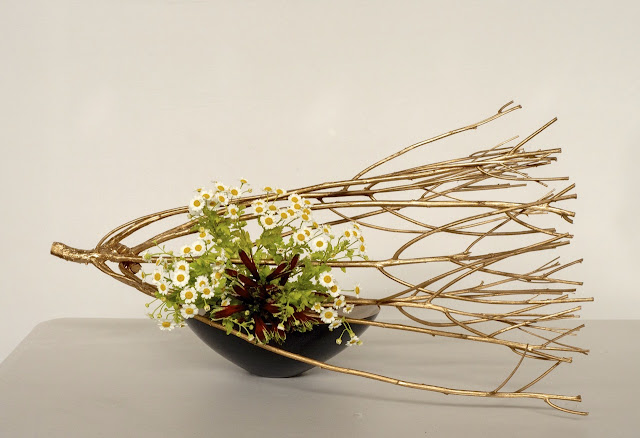In the first week of January this year I reported on the destruction by wind storm of a large old White Oak, Quercus alba, in the Royal Botanic Gardens Melbourne.
The tree was 130 years old and split apart at a point where it had become weakened by age. Fortunately the tree had protective fencing around it before the storm because the Gardens' staff had observed splitting in some part of the tree and feared branches falling. It was a very sad sight for a long time while the Gardens' management decided what to do with the remains of the tree.
It seems that the new project is to make a gathering place for visitors to the Gardens by turning the fallen branches into informal seating and perhaps tables. Volunteers from the Melbourne Guild of Fine Woodworking recently visited the site and shared their knowledge and skills with the project team.
In our own garden at the end of last summer I had to prune the Marguerite Daisy, Argyranthemum frutescens, which had become very untidy and overgrown.
When I see painted branches, especially in ikebana, I am reminded of Mr Tetsunori Kawana's wisdom. At a workshop he said, painted branches should no longer be thought of as branches but as a sculptural form which has that particular shape. Having created this golden sculpture, I used it in February this year at the Consul General of Japan's residence for the reigning Emperor's birthday celebration.
The ceramic bowl is by the Castlemaine ceramic artist Phil Elson.
Greetings from Christopher
19th December 2020









What an uplifting ending to the so sad situation of the fallen oak tree. I really like how they have turned a tragic situation into an interesting installation and future fathering spot to honor that tree.
ReplyDelete